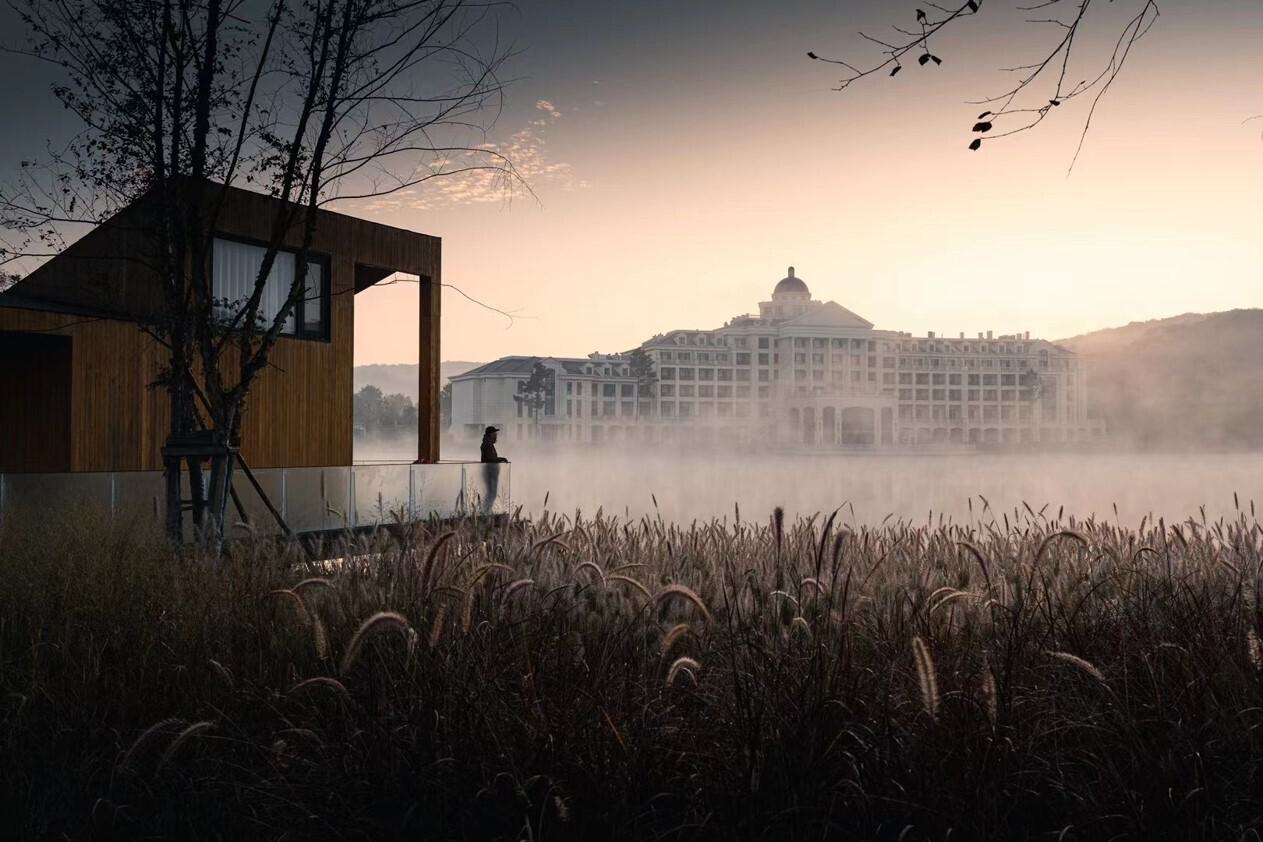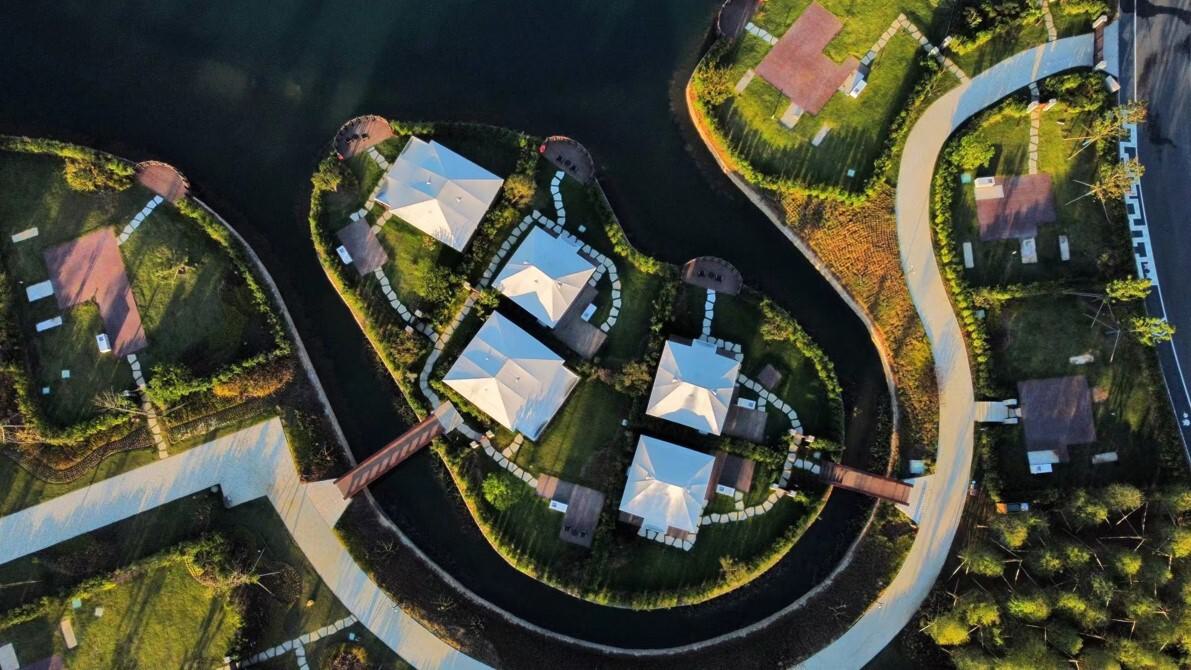
06 Sept 2024
The focus on leisure facilities often gravitates toward grand, tourist-centric projects. However, a shift is emerging towards creating spaces that serve not only as attractions for visitors but also as vibrant, year-round community hubs.
By integrating design principles that cater to both tourists and locals, we can create environments that enrich the daily lives of residents and stimulate local economies while celebrating the unique character of each area.
Designing for Every Season
Traditionally, leisure facilities have been envisioned as sunny-day destinations. While these spaces are invaluable, their appeal can diminish with weather changes, leaving them underutilised during colder months or inclement weather – something we know all too well in Great Britain. To counter this, it's essential to adopt a design philosophy that emphasises flexibility and year-round use.
Consider CPMG’s Inlong Narada Resort in Jiangsu Province, China, a prime example of how thoughtful design can create versatile spaces. A major leisure project spanning 530 acres, the resort transforms a former quarry into a luxury destination centred around a lake. Key features in the first phase include a hotel, reception building, lodges, and children’s play facilities, while the second phase will add a spa complex, villas, and a clifftop bar. Being subtropical, the climate is very different from the UK, but the challenges are similar, and the project integrates indoor and outdoor facilities seamlessly, offering both sheltered and open-air experiences that adapt to seasonal variations. Sustainability is integral to the project, a key aspect that respects the area and its residents, ensuring long-term benefits for the community. By leveraging the existing landform and reusing materials from the quarry site to reduce waste, the spa complex also incorporates advanced waste treatment to protect the lake’s ecosystem. This approach not only attracts visitors but ensures that the space remains a vibrant part of the community throughout the year. It is expected to boost tourism and the local economy.
And in the UK, we are seeing more government investment in leisure facilities, like our mentioned project in Sutton-on-Sea, where the Colonnade and Pleasure Gardens are set to transform the seafront into a year-round hub for both locals and visitors, offering modern amenities and green spaces that foster community engagement and economic growth.

Celebrating and Enhancing Local Communities
The goal of contemporary leisure facility design should be more than just boosting tourism; it should focus on enhancing the quality of life for local residents. When we design with the community in mind, we create spaces that foster social cohesion and celebrate the local character. Engaging with community members during the design process ensures that their needs and preferences shape the final outcome, resulting in spaces that locals are excited to use and take pride in.
For example, integrating green spaces and enhancing accessibility are crucial elements. Green spaces provide not only aesthetic and environmental benefits but also opportunities for recreation and relaxation. Accessible design ensures that everyone, regardless of ability, can enjoy these spaces. By prioritising inclusivity and accessibility, we make our communities more welcoming and supportive.
Flexible Spaces for Diverse Uses
The versatility of spaces can significantly enhance their appeal. Flexible design allows facilities to adapt to various functions, from social gatherings and cultural events to personal relaxation and family activities. This adaptability ensures that the space remains relevant and engaging throughout the year, regardless of the season or weather conditions.
Flexible spaces also contribute to economic benefits by supporting a diverse range of activities and events. This variety attracts different user groups, from tourists seeking unique experiences to locals looking for everyday enjoyment. As a result, local businesses and services benefit from increased foot traffic and economic activity.
Economic and Social Benefits
Investing in well-designed leisure facilities offers substantial economic and social returns. By creating spaces that are appealing and functional year-round, we encourage not only increased tourism but also sustained local engagement. This dual focus helps to boost local economies and fosters a sense of pride and ownership within the community.
These spaces act as catalysts for regeneration, bringing vitality to areas that may have been previously overlooked. By demonstrating a commitment to local interests and needs, we build trust and support within the community, ensuring that development efforts align with their expectations and enhance their quality of life.
Additional Benefits
- Cultural Preservation and Enhancement: Leisure facilities designed with local culture in mind can serve as cultural landmarks, preserving and enhancing the area's unique identity. This not only attracts visitors but also instils pride in residents.
- Health and Wellbeing: Incorporating green spaces, wellness centres, and recreational facilities within leisure projects promotes the health and wellbeing of the community. These spaces provide opportunities for physical activity, relaxation, and social interaction, contributing to overall community health. At Rushcliffe Arena the CPMG designed Civic Hub and Leisure Centre led to a 300% increased in gym membership and a 100% increase in swimming lesson take up.

- Job Creation: The construction and ongoing operation of leisure facilities create significant employment opportunities in various sectors, including construction, hospitality, and services. This job creation boosts the local economy and provides stable employment for residents.
- Enhancing Property Values: Well-designed leisure facilities can increase the desirability of surrounding areas, leading to higher property values. This, in turn, attracts further investment and development, contributing to the area's long-term economic growth.
- Architectural Innovation: Leisure facilities offer a unique opportunity for architects and designers to push the boundaries of innovation. Whether through the use of sustainable materials, advanced construction techniques, or creative design elements, these projects can set new standards in architecture and interior design. In our latest leisure project for Narada Group in Guangzhou, Southern China, CPMG’s masterplan incorporates experiential architectural interventions that enhance the sense of arrival and provide a new identity for the resort.


Designing leisure facilities with both tourists and locals in mind is not just a trend but a necessity for creating vibrant, sustainable communities. By focusing on flexibility, inclusivity, and community engagement, we can develop spaces that celebrate local culture, provide year-round enjoyment, and support economic growth. The success of projects like the Inlong Narada Resort illustrates the potential of thoughtful design to transform areas into thriving hubs of activity and connection. As we continue to push the boundaries of architecture and interior design, let us remember that the true measure of success lies in the positive impact we make on the communities we serve.
